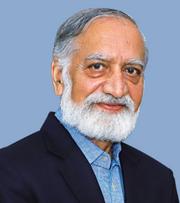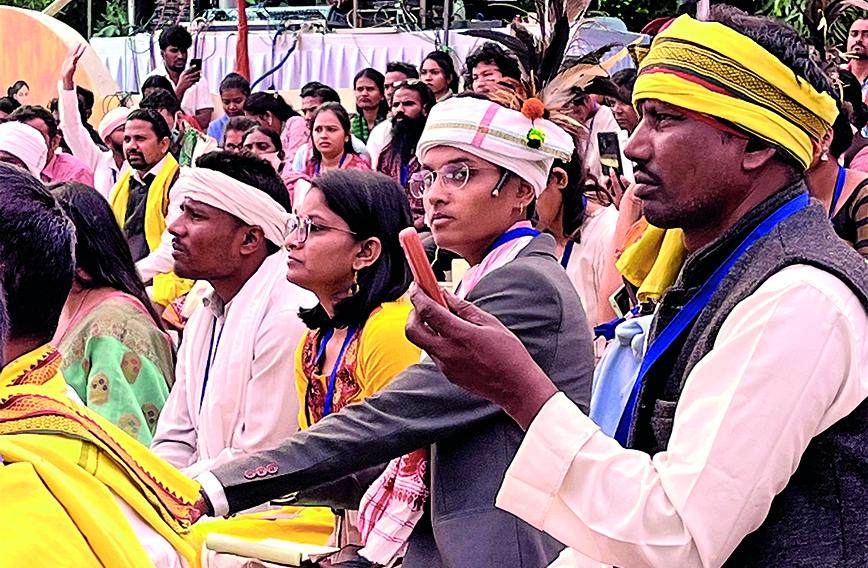
KIRAN KARNIK
On occasion, most recently in the US, Prime Minister Narendra Modi has spoken with pride about the diversity of India. It is, indeed, wide-ranging in all dimensions: from the geography, climate, flora and fauna to — most importantly — the people. In the last aspect, we are probably amongst the most diverse countries in the world, with diversity in every element that one can think of: be it ethnicity, race, religion, language, cuisine, culture, caste, couture, income, or education. It is this people diversity that the PM was alluding to, one presumes.
And it is this that needs to be recognized, showcased and celebrated. Through the variety of art forms, dress, and foods, as in so many other ways, this diversity not only enriches our culture but is, in fact, at the core of what constitutes “Indianness”. Be it Kashmiriyat or the Ganga-Jamuni tehzeeb in the North; or the composite intermingling of cultures in Kerala; or the international flavour of Goa (Indo-Portuguese) and Puducherry (Indo-French) — these and so many other cultures brought here over the centuries by traders, immigrants, and invaders make India a unique amalgam of plurality. Attribute this to India’s exceptional ability to learn, absorb, adapt, and integrate, thereby enriching and differentiating local cultures.
Those with a more pragmatic or materialistic mindset may note what this author has frequently written about: diversity is the foundation and catalyst for innovation, the new driver of economic growth. For, simply put, “being different” leads to diversity of thought and ideas, which is what spawns innovation. Today, if India is amongst the world leaders in start-ups and innovations, a great deal of this is due to the divergent thinking that springs from diversity. In tomorrow’s world, this is, indeed, India’s biggest asset.
By definition, uniformity is the antithesis of diversity. The latter also implies decentralization, quite the opposite of a hierarchical command and control structure. In this context, recent trends to control and centralize are worrisome. In a country as diverse as India, a one-shoe-fits-all approach is unlikely to work and will certainly be sub-optimal. ‘One country, one xx’ is a nice aphorism, but one country, one solution is unlikely to solve our problems or lead us forward. Those who advocate this would do well to take to heart the PM’s emphasis on diversity.
It is noteworthy that the pluralism of India derives from the syncretic ethos that marks the country’s cultural evolution over centuries. This needs emphasis when one sees tendencies to create silos of separateness based on one or another of the streams that make for diversity. Caste-based ghettos, with Dalits banished to the periphery, have been common in villages. In certain urban areas one now sees religion-based and income-based ghettos. With intra-country rural to urban migration, region-based (i.e., language and culture differentiated) areas have come up. While these together reflect the diversity of the country, each also separates or isolates a defined group and thereby hinders the intermingling that has been an inherent element of Indian plurality.
Each person has multiple identities, based on birth, role, and choice. In India, recent decades have seen a resurgence of birth identities. There was a time when one dreamt of a country where identity by choice would dominate other identifiers, where religion, caste, or region would matter less than the by-choice identity. That you are a doctor would define you rather than the fact that you are from an ‘OBC’; that you are a cricketer will matter more than the fact that you were born a Christian.
Today, a few countries have erased the gender-based birth identity: you may have been born male, but can declare yourself (by choice) female or transgender. We are probably a long way from eradicating or allowing changes in birth identities. In India, you can change your religion (another birth identity assumed to be immutable) — though that has become increasingly difficult in terms of the social cost. For many, there could also be an economic cost: reservation and quotas for admissions and jobs — available on a caste basis — may not be available to religious converts. These costs reinforce the need to retain and emphasize birth identities.
The dream was also that groups representing various diversities (including those that emanate from birth or parentage — caste, religion, language, etc.) would be treated equally and justly. The hope was that some of these divides would slowly fade away — or, at least, matter less — with education, greater interaction, and inter-marriage. Inter-caste and inter-religious marriages were encouraged and incentivized, in the hope that they would create greater understanding and a more harmonious society.
As eminent sociologist and thinker Dipankar Gupta has noted, an Indian marriage is far more than a union between two individuals; it is seen as a permanent bond linking their families. In this movie, it is not the bride and bridegroom who are hero-heroine: it is their families who are the principal protagonists. The expectation that education and modernization would change this and give greater agency to the youngsters has been belied. In fact, arguably, things have got worse, with not only families, but khap panchayats or religious groups blocking undesirable marriages — defined as inter-caste, intra-gotra, and inter-religion. In many states, the bogey of ‘love jihad’ has led to laws that deeply constrain inter-religious marriages. What a change in a few decades!
Some of this will emphasize or sustain diversity, but in a divisive and corrosive manner. Pluralism, syncretism, compassion, individual empowerment, and agency are being shown the door. This is hardly the kind of diversity that has long been the core of Indianness. Nor is it the kind that will lead to innovation, invention, or greater soft power: things that could be India’s strong suits in an increasingly competitive world.
As we look ahead, enlightened self-interest demands a return to the true meaning of our diversity and making it what it is meant to be: positive, cohesive, common-yet-different, mutually respected differences that are a cohesive force for good. ν
Kiran Karnik is a public policy analyst and author. His most recent book is ‘Decisive Decade: India 2030, Gazelle or Hippo’
Comments
Currently there are no Comments. Be first to write a comment!




